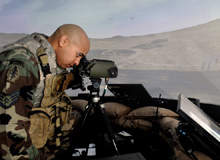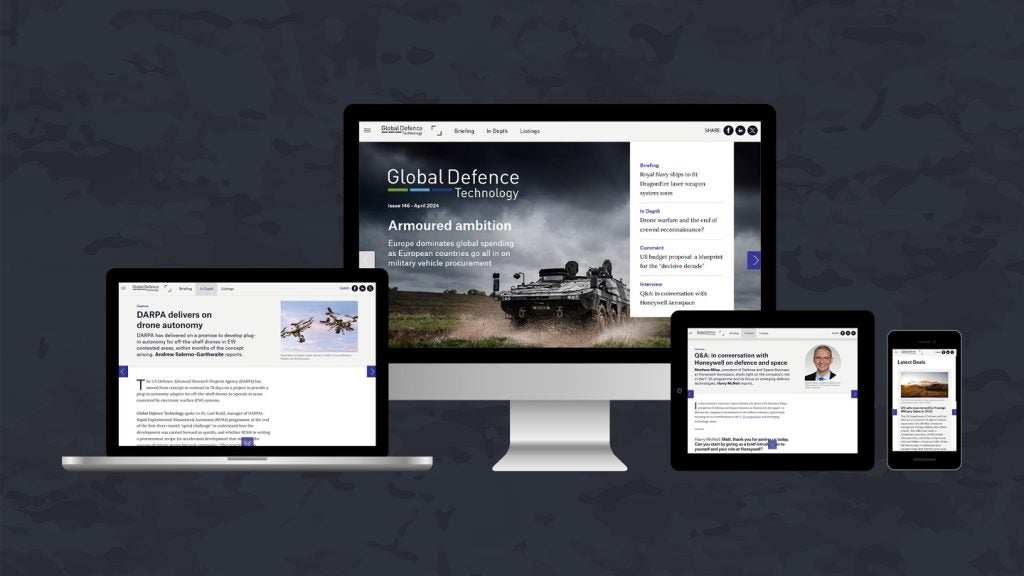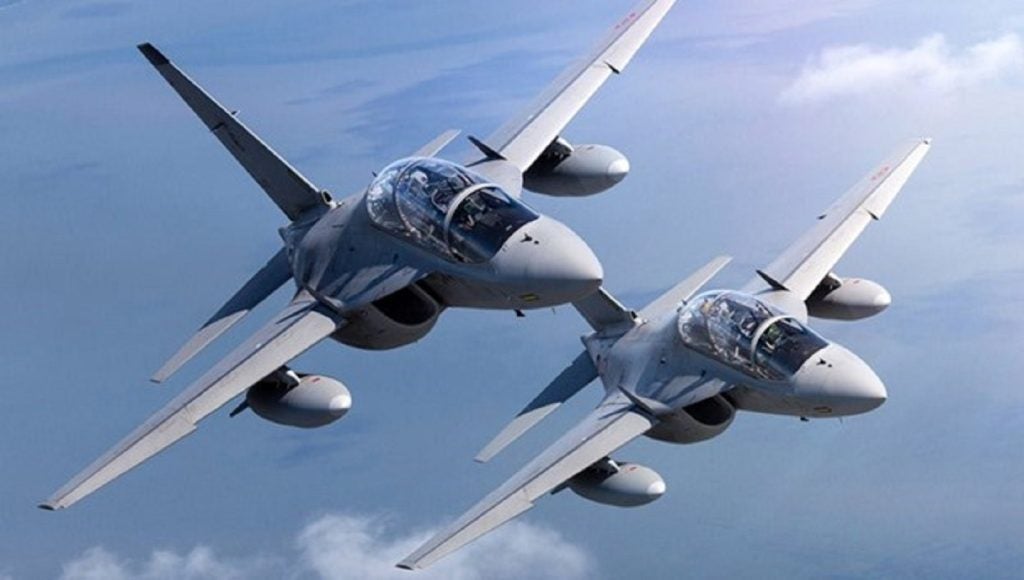
Collecting large groups of globally dispersed personnel and equipment for training in one place can be costly and disruptive. But once it is possible to network four simulators in the same building, dispersing them becomes a question not of kind, but merely of degree. Recent efforts including coalition forces have only proven this.
In March this year a joint multinational exercise called Avenging Eagle was held, bringing together the expertise of forces – through end-to-end simulated combat – of the US Air Force, the UK RAF and other players from Europe.
Avenging Eagle required a disparate collection of units, including RAF Tornados and Typhoons, F-15 Eagles and F-16 Falcons, A-10 ground attack aircraft and AWACS aircraft, along with forward air controllers.
The participants were able to plan, execute and debrief the virtual mission and subsequently review their experience, within the same synthetic environment.
Moreover, Avenging Eagle reached beyond multinational air force cooperation to include army and navy tie-ins. The exercise identified opportunities for inserting UK Army fire support teams and fire planning cells more directly into RAF operations. More concretely, RAF Waddington was linked to naval training systems at HMS Dryad, demonstrating that ship and aircraft crews can train together synthetically.
See Also:
Avenging Eagle formed part of the mission training through distributed simulation (MTDS) prototype – the flagship programme of team ACTIVE (aircrew collective training through immersive virtual events), a multinational consortium led by UK-headquartered QinetiQ and featuring Boeing, cueSim, Rockwell Collins, Aviation Training International Ltd and HVR Consulting).
How well do you really know your competitors?
Access the most comprehensive Company Profiles on the market, powered by GlobalData. Save hours of research. Gain competitive edge.

Thank you!
Your download email will arrive shortly
Not ready to buy yet? Download a free sample
We are confident about the unique quality of our Company Profiles. However, we want you to make the most beneficial decision for your business, so we offer a free sample that you can download by submitting the below form
By GlobalDataTo date, the standard for widely dispersed virtual training has been set by MTDS, showing that joint training ideals of yesteryear, which consisted mostly of arms training, are about to change.
The escalating cost of limited wars, global redistribution of wealth and the need for international cooperation for political purposes has meant multinational operations and training are the way of the future, and this includes in simulation. But to take simulation expertise to the global stage first requires confidence in what you are doing in your own bases, as the US has recently highlighted.
As part of the Pentagon’s quadrennial defense review (QDR), the US Air Force (USAF) has produced its own strategic plan for simulation within the 2006-2008 timeframe, emphasising its own need for joint personnel training. The review mandates the alignment of training with ‘joint, interagency, and coalition partners’ to enable personnel to ‘integrate seamlessly’ without the need for pre-mission training.
While it is not revolutionary, the specification of interagency and ‘joint’ partners indicates greater emphasis on driving interactions between agencies as far down the organisational chart as possible.
RETHINKING TRAINING IN THE US
In January this year, the US Air Force’s Air Education and Training Command published a white paper ‘On learning, the future of air force education and training’, which set out three broad focus areas. One area it focuses on is knowledge management, with integration, distribution and the archiving of knowledge as key. The aim here is to balance the benefits seen when the awareness of every part of the organisation is maximised, against the costs of transmission efforts and information
overload.
It also deals with precision learning – defined as the delivery of ‘the appropriate education, training or experience at the right time and place, in the right format, to generate the right effect’.
The third aspect, continuous learning, is critical adaption in an assumed hostile world where adversaries continuously improve their own game.
All three objectives require the USAF to implement extensive technological transformations and in this respect, the white paper calls specifically for enhanced use of visualisation technologies.
WHERE SIMULATION REALLY FITS IN
Training technology plays a large part in the US Air Force’s plans to attain the goals set out in its focus paper – seen as the ‘live, virtual and constructive’
(LV&C) training paradigm. LV&C builds on simulation and gaming technology while removing physical constraints. In the traditional sense it is people using real equipment in the physical world
The US Air Force has found that simulation technology is becoming increasingly useful even for live training. For example, Northrop Grumman’s joint threat emitter (JTE) mimics virtually all SAM and AAA radar systems. Capable of simultaneously simulating multiple radar units, the JTE can train aircrews to defeat or at least neutralise integrated air defence systems.
One classic example of virtual training is the enclosed flight simulator.
Current simulators encase the trainee in a fully enclosed cabin featuring multimodal sensory input, complete computer generation imagery (CGI) representation, and ‘disturbances’ that can arise from the trainee’s actions, pre-programmed script variations and/or instructor input.
Constructive training, according to the US Air Force, involves ‘computer-generated entities such as models, game-type simulations and computer-based trainers’. Constructed entirely within the virtual world, such a training environment allows for interactive training down to the squadron level without physical constraints.
In contrast to virtual training, presumably, constructive training does not physically embed the trainee in the virtual environment; instead, it presents role-playing games to trainees who are increasingly likely to be intimately familiar with this tool due to extensive childhood and adolescent experience with games, such as Grand Theft Auto.
RECONSTRUCTING REALITY
From a qualitative but highly practical perspective, the key value of virtual reality training is that the trainee experiences sensory immersion in an environment that feels physically genuine even though it is not objectively real. This immersion is highly useful and, in some cases, absolutely necessary to create the emotional ‘flood-like adrenalin rush and freezing instinct that degrades warfighting skills in real combat’, as the USAF puts it. On the other hand, constructed reality is better suited to building sophisticated cognitive skills.
Given that both virtual and constructive training create similar artificial external environments, the dividing line between them is not sharply drawn. The US’s white paper, for example, mixes technologies across the two categories citing online virtual world Second Life as ‘an example of a virtual learning environment’ to which some government agencies are ‘already migrating content’.
Indeed, the distinction between virtual and constructed realities seems less significant than the difference between sequential single-student training and simultaneous interactive multiple student training. Many popular video games, for example, can be played the traditional way offline against the game programme or online against actual people in different locations, with the gameplay driven by a larger version of the game programme on a remote internet server.
Similarly, cutting-edge flight trainers such as the Boeing-integrated F-22 simulator can essentially construct, inside the trainee’s cabin, an entire visual and auditory world. Built by L-3 Communications, the full mission trainers (FMT’s) are networked into virtual four-plane teams, enabling trainees to practice formation missions and group tactics.
Most commercial training systems will already manifest a combination of the methods that the white paper calls for. For example the F-22 training system includes pilot and maintenance trainers, instructor-led and student-paced courseware and electronic classrooms. The F-22 training package, for example, was modelled on the Boeing 777 jetliner programme which features extensive use of cutting-edge commercial-off-the-shelf technology. A definite benefit when solutions are being sought between forces. But will this be enough to satisfy needs, and security, on sovereign soil?






